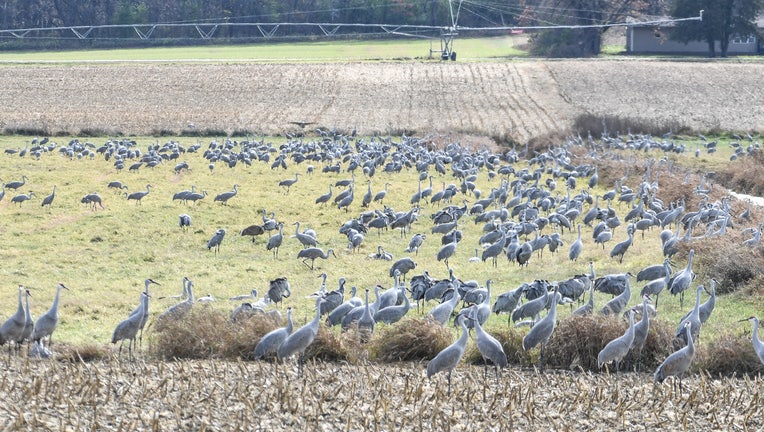Sandhill cranes gathering in Wisconsin, migrating south

Sandhill cranes gathering in Sauk County on Nov. 11. (Credit: Doug Pellerin)
MILWAUKEE - Sandhill cranes, one of Wisconsin's largest birds, are starting to gather before they migrate south for winter. Photographs of this magnificent bird in larger and larger groups continue to get more common in the central parts of the state.
"They normally leave mid-to-late November." said Doug Pellerin, an avid birdwatcher and volunteer surveyor for the International Crane Foundation. And where he most frequently visits near the Horicon Marsh, he said there are still large numbers hanging around.
A majority of sandhill cranes spend their summers breeding in Canada and around the Great Lakes with large populations in the West as well. In the winter, they migrate south to areas ranging from California and Texas to Mexico and Florida.
SIGN UP TODAY: Get daily headlines, breaking news emails from FOX6 News
Sandhill cranes can often be found in recently harvested corn fields trying to find a quick bite of corn heading south. While they leave Wisconsin in the thousands, their numbers continue to grow further south in Nebraska as Canadian populations join in on the migration. Along the Platte River in Nebraska, they can be found in huge numbers.
"My favorite memory was from the Platte River area in Nebraska from five years ago when we saw tens of thousands of cranes." said Pellerin.
Internationally, many crane species are threatened – but the sandhill has become the highest population of cranes in the world. In the same state of Wisconsin, you can find one of the rarest species of crane.
Whooping cranes were on the brink of extinction in the 1940s. According to the International Crane Foundation, their numbers are now over 800. They differ from sandhill cranes as adults as being mostly white with black wingtips. They also stand slightly taller. But as juveniles, whooping cranes look very similar to sandhill cranes. The rare bird now calls many large historic wetlands in Wisconsin home once again after decades of research and reintroduction efforts.


